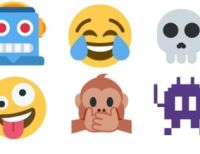
Two of The New Yorker cartoons with their original captions and captions written with the assistance of AI. Image: University of Sydney, with cartoons by Matthew Diffee and Mick Stevens, The New Yorker, Condé Nast.
University of Sydney researchers have used an AI-assisted application to help people write cartoon captions for cartoons published in The New Yorker Cartoon Caption Contest.
Twenty participants with little to no experience writing cartoon captions wrote 400 cartoon captions. 200 captions were written with the help from the AI tool, and the remainder were written without assistance.
A second group of 67 people then rated how funny these cartoon captions were. The researchers found jokes written with the help of the tool were found to be significantly funnier than those written without the tool. Comparatively, ratings for the AI assisted captions were almost 30 percent closer to the winning captions in The New Yorker Cartoon Caption Contest.
Participants said the tool helped them piece together humorous narratives and get started, helping to understand nuances and funny elements, and to come up with new ideas.
Almost half, 95 out of the 200 jokes written with the help of AI were also rated as funnier than the original cartoon captions by The New Yorker.
"The AI tool helps people be significantly funnier, but more importantly, it may be a cure for writer's block," said Dr Anusha Withana from the School of Computer Science and the Digital Sciences Initiative.
AI helps non-native speakers be funny in a new language
Dr Withana and his team conceived the tool to help non-native speakers understand humour in their new language. The results also showed non-native speakers found the tool more helpful, bringing them 43 percent closer to the winning caption.
Born in Sri Lanka and having lived in Japan, Singapore, Germany and now Australia, Dr Withana said understanding local humour could often be a "minefield" for a new arrival.
"In a new country I would often find myself ‘off-key’”, he said. “For example, I once made a sarcastic comment that didn't go down well in Germany. Here in Australia, it would have gotten a laugh."
Hasindu Kariyawasam led the research project as an undergraduate research intern.
"Humour is such an important way to relate to others,” he said. “It is also important for emotional wellbeing and creativity, and for managing stress, depression, and anxiety. As a non-native speaker myself, I found the system helped me write jokes more easily, and it made the experience fun."
How can AI help us understand humour?
The original aspiration for the research was to use technology to help get creative juices flowing and get words down on the page. Alister Palmer, a master’s student and amateur cartoonist conceived the idea to engage more people in cartooning.
The tool works through an algorithm which assesses incongruity. It analyses the words in a description of the cartoon and generates incongruous words as hints for the cartoonist.
For example, in one cartoon a person is depicted wearing a rabbit suit to the office. The tool suggested the words “rabbit” and “soup” (derived from the incongruity with the word “suit”). One of the pilot study participants came up with the caption “I meant the rabbit soup, not suit”. The winning caption at The New Yorker competition was "It's not just Henderson. Corporate laid off the entire bunny division."














